Pekka Buttler, updated 05/2025
The Topcon UV mount was used by Topcon for its enthusiast line of cameras. The Topcon UV system can be argued to be the most successful leaf shutter SLR system.
Topcon UV mount specifications and identification
Mount type: Bayonet (lens release on lens)
Flange focal distance: 55 mm / 52 / 49 mm
Film format: 36mm x 24mm (‘Full frame’)
Mount communication: two levers: one for telling the lens which aperture the user (or automation) has chosen, another to stop down the lens for the shot (camera-to-lens)
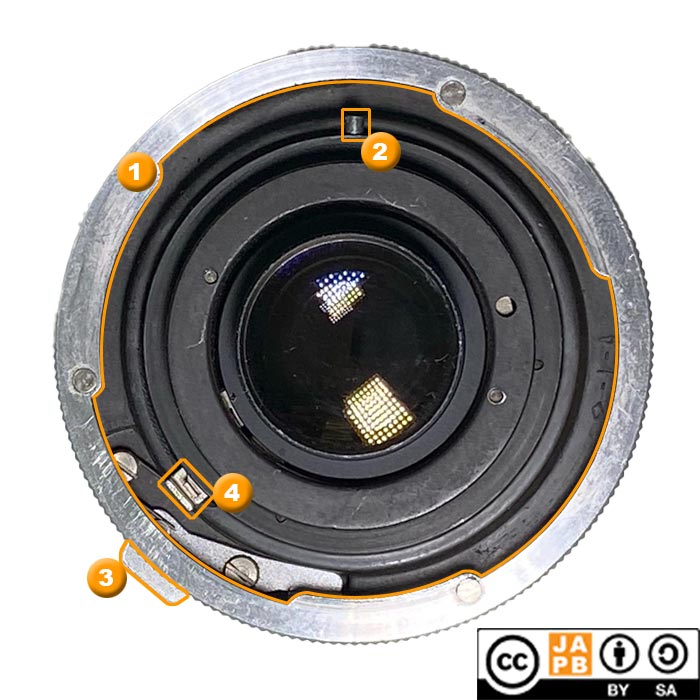
Key characteristics of Topcon UV mount:
[1] Three-pronged female bayonet mount
[2] Orientation pin
[3] Lens release button
[4] Dual-lever aperture control system
The Flange focal distance of the Topcon UV mount is regularly quoted as 55 mm, but this can lead to some confusion, as it is by no means clear what constitutes the flange on a female bayonet mount like the Topcon UV.
• 55 mm is the distance from the film plane to the furthermost protrusions on the camera (effectively the protruding bayonet ring)
• 52 is the distance from the film plane to the external/outer flange (where the rear of the lens meets up with the shutter speed control ring on a Topcon UV camera)
• 49 mm is the distance from the film plane to the inner flange (inside the bayonet mount) of a Topcon UV camera/lens.
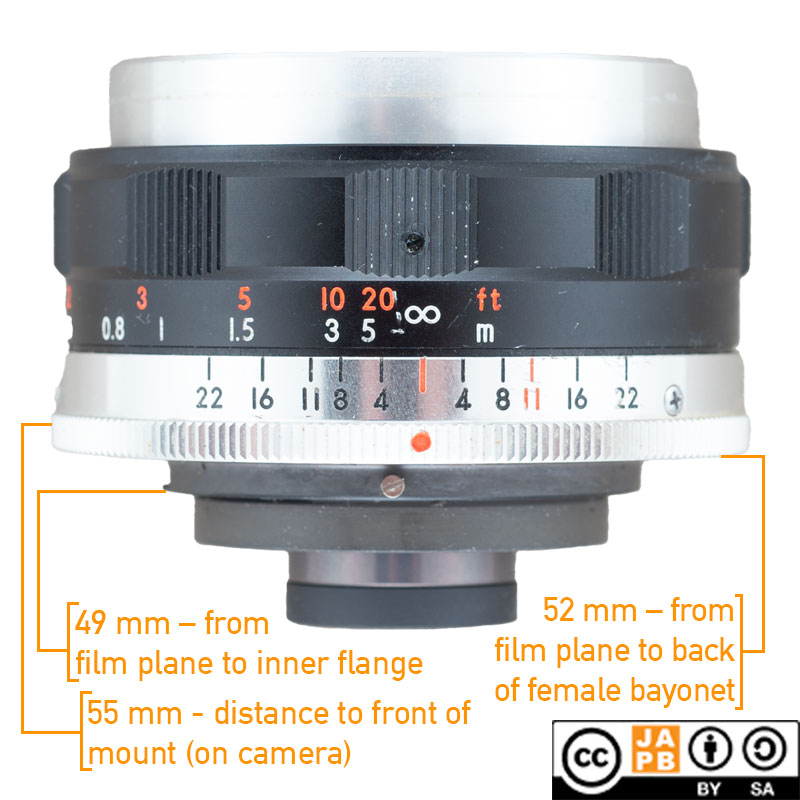
Basic Information on the Topcon UV mount:
Topcon was a famed Japanese camera manufacturer, that in its heyday was seen as competing with Nikon for the spot as top-SLR-dog. You can read a bit more about Topcon’s history in the JAPB company profile on Topcon.
Topcon started its SLR manufacture using a variant of the Exakta mount, but also introduced (1963) another, somewhat unusual, SLR lens mount. This later mount is typically referred to as the Topcon UV mount as the line of lenses was named ‘UV Topcor’. This also allows one to distinguish Topcon UV lenses (and the Topcon UV mount) from the Topcon RE lenses. For a more detailed discussion of the mounts and mount variants used by Topcon, refer to a the Topcon company profile.
From today’s perspective Topcon UV cameras and lenses are somewhat exceptional in that they are interchangeable lens leaf shutter SLR cameras1. Instead of the customary arrangement (echoed in >90% of SLR cameras) of a focal plane shutter (cloth or metal) nearest to the film and a mirror between that shutter and the lens, the line of Topcon UV-mount cameras were designed to use a mirror, and a leaf shutter between the mirror and the lens (but no focal plane shutter).
See pictures below for structure of Topcon UV mount:
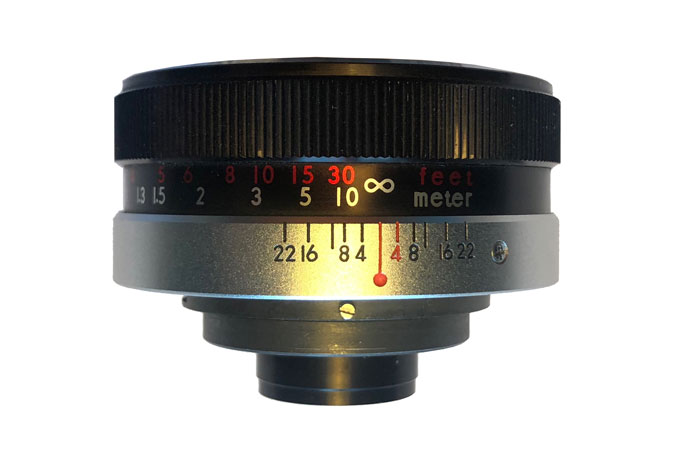
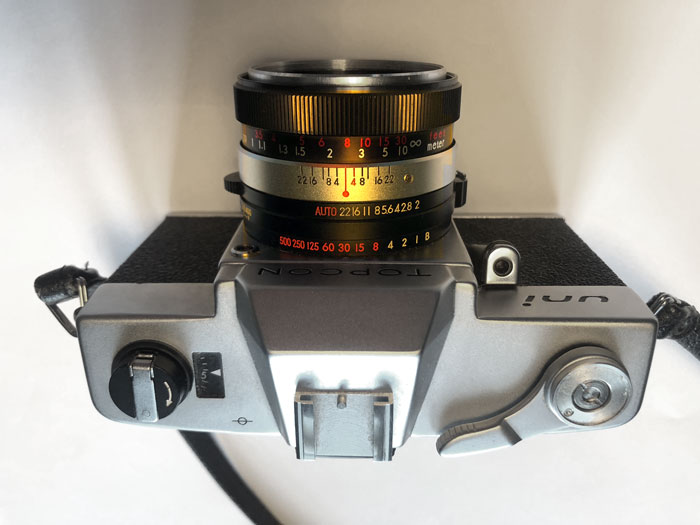
Right: Topcon Uni with UV Topcor lens. Note that aperture and shutter speed controls are on camera-end of mount.
While there are some inherent advantages to leaf shutter cameras, putting the leaf shutter into the SLR itself (and not into the SLR lens) does lead to some complications, namely that: if the shutter’s maximum opening is large, the fastest shutter speeds cannot be very fast; if the shutter’s maximum opening is small, the maximum theoretical lens aperture is also small. As a result of this, no Topcon UV lens has a maximum aperture brighter than f/2.
Another problematic aspect with leaf shutter SLR’s is that the arrangement leads to a technically somewhat convoluted image-taking sequence 2.
But there are also undoubtable advantages to lead shutters vis-a-vis focal plane shutters: flash sync at all speeds, and a technically more resilient shutter that (compared to cloth shutters) also suffers less of a risk to develop light leaks.
Side note: Topcon HI lenses
The entire Topcon UV system was built around the abilities and limitations of the leaf shutter. In a move that must have causes some head-scratching at Topcon HQ, Seikosha (the company behind the leaf shutter used by Topcon) decided to stop delivering leaf shutters for the Topcon SLR system. In a reaction to this, Topcon’s next consumer SLR – the IC-1 Auto – retained the Topcon UV mount, but did away with the leaf shutter in favour of a more traditional focal plane shutter.
This move also meant that the limitations that the narrow throat of the leaf shutter mechanism had placed on lens design were somewhat relaxed. To capitalise on this, Topcon released a new line of lenses, which they named Topcon HI (I have no idea what the HI stands for).
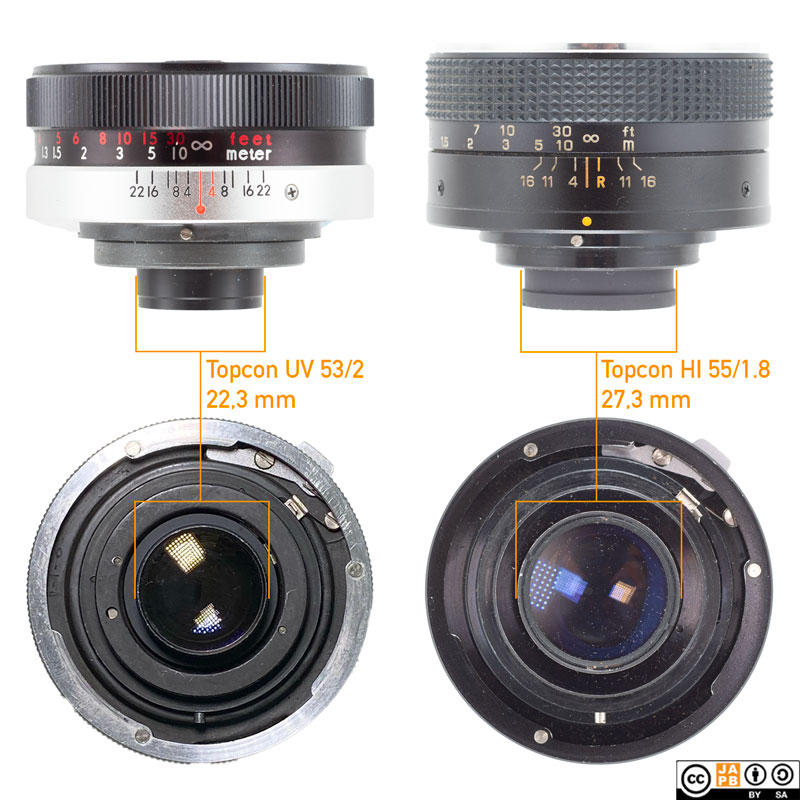
While the IC-1 auto (and its successor) could use all Topcon UV lenses, they could also use the Topcon HI lenses, whereas not all Topcon HI lenses3 could be used on Topcon UV cameras preceding the IC-1 auto (Wink Mirror S, Uni, Unirex, Unirex EE).
Adapting Topcon UV lenses
Note that this discussion applies to Topcon UV and Topcon HI lenses equally.
So and so. On the one hand, the TopconUV mount has a very generous flange focal distance (53 mm), that would allow adaptation to both most 35 mm SLR’s as well as (naturally) all mirrorless cameras.
On the other hand, as the lenses themselves lack an aperture control mechanism, the adapter must furnish that mechanism. Thereby the only way you could use TopconUV lenses on a dumb adapter would be to shoot wide open 24/7. On the other hand, if you can get your hands on a specialised adapter that allows aperture control, there are no limitations.
Traditionally adapter availability has been an impediment, and no first-tier adapter manufacturers currently offer adapters for the Topcon UV mount. On the other hand, in the age of 3D printing, producing many kinds of adapters that previously were uneconomical have suddenly become within reach.
My personal solution to using Topcon UV lenses on my mirrorless systems is a 3D printed adapter I bought on eBay from a Ukrainian designer (lens_adapters_plates_ua). The adapter securely fastens the lens to my camera body, and the aperture control mechanism works as expected. While I admit to being a tad sceptical about the longevity of 3D printed adapters (due to metal-on-plastic wear), I feel the solution is more than sufficient for occasional use.
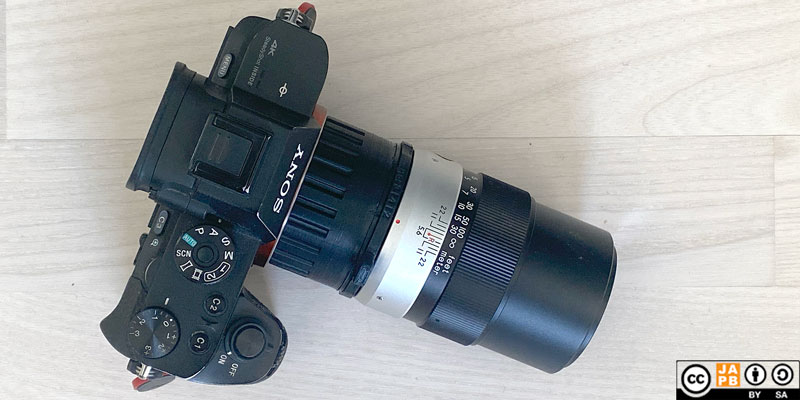
Footnotes:
- While the concept of a leaf shutter SLR might today feel odd, there were several companies in the 1960s that experimented with similar arrangements, including Mamiya, Voigtländer, Zeiss Ikon and Kodak (Germany). ↩︎
- Leaf shutters in SLRs are a bit of a kludge because the mirror needs to double as focal plane shutter (in the sense that the mirror may not let any light through) and the picture-taking process becomes hideously complex:
• Photographer frames, focuses etc. (Mirror is down, leaf shutter is open)
• Photographer pulls trigger (Leaf shutter is closed, mirror is raised, aperture closes to pre-set value)
• The picture is taken (Leaf shutter opens, closes)
• Return to normal (Aperture opens, mirror is lowered, leaf shutter opens)
As one commentator puts it while discussing DKL-mount cameras (another type of leaf shutter SLR’s) “[Camera] mechanics smilingly turn down repair requests [on such cameras], or turn, run and scream” (my translation) ↩︎ - I have not had access to all Topcon HI lenses, but I can assert that at least the Topcor HI 55 mm f/1.8 can not be mounted on a leaf shutter Topcon camera. I have also heard that mounting the Topcon HI 87–205 mm f/4.7 zoom lens on leaf shutter Topcons will not work, but I have not verified this. On the other hand, the other Topcon HI lenses ↩︎